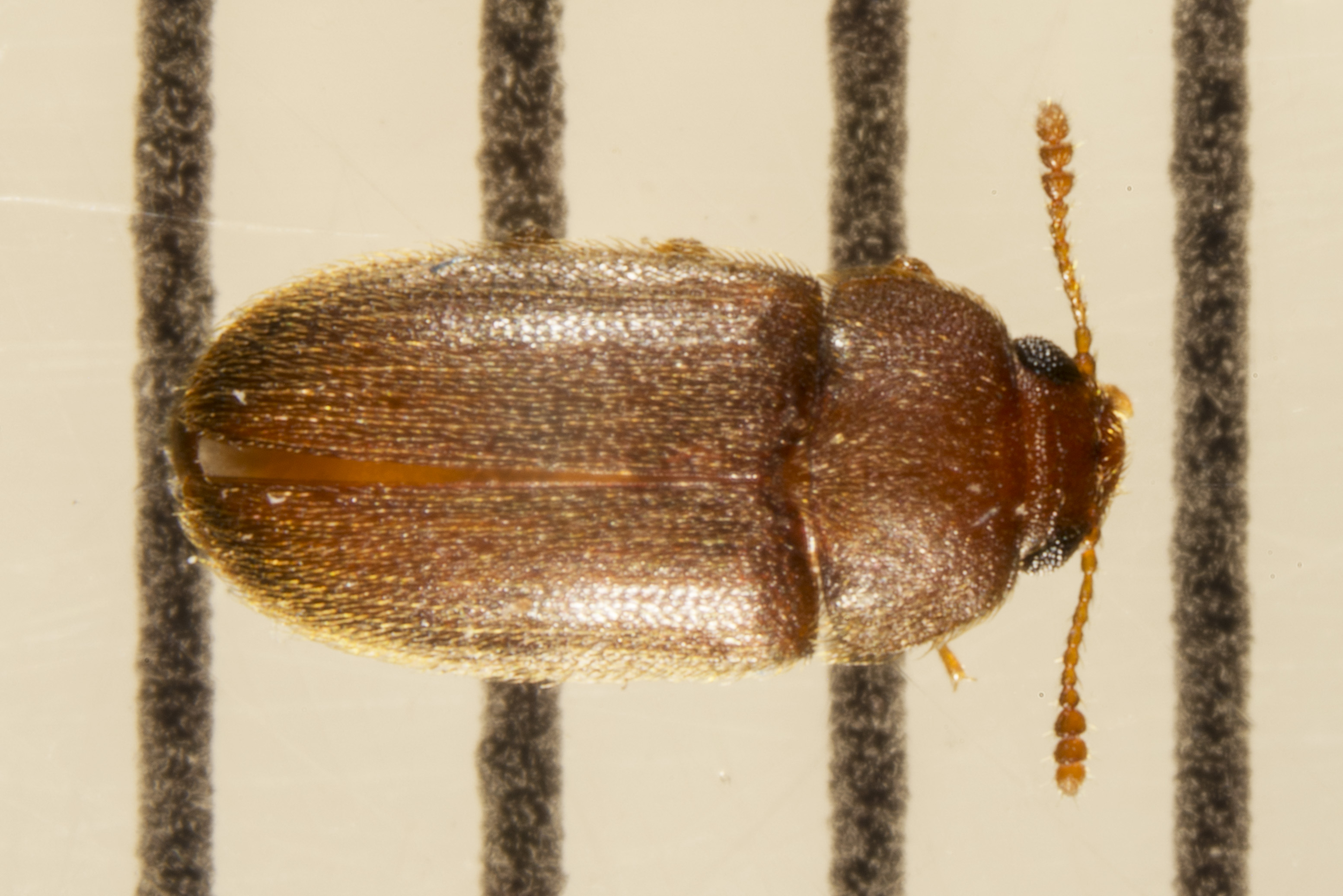Stored Product Pests
HAIRY FUNGUS BEETLE Typhaea stercorea (L.)
Linda J. Mason, Extension Entomologist
If you want to view as pdf, click here
DESCRIPTION
Adults are oblong-oval insects that are brown in color with black eyes. They are 2-3 mm long (1/10”) and covered with short, stout, moderately dense hairs. Hairs on the wing covers are arranged in rows, giving the appearance of lines running lengthwise. They have slender antennae with the last three segments enlarged. Adults are capable of flight.
Mature larvae are whitish to pale brown, 4-4.5 mm (1/6 in.) long. Darker projections at the tip of the abdomen are similar to those found on flour beetle larvae.
Hairy fungus beetle. (Photo Credit: John Obermeyer)
BIOLOGY AND BEHAVIOR
Hairy fungus beetles may be found indoors or outdoors in places where grains or other food products are stored under conditions favorable for mold to grow. This insect serves as an indicator that grains or other foods are too damp for safe storage and may be going out of condition. Adults may fly or crawl into railcars or food processing plants from moist moldy residues nearby.
FOOD
This species occurs on a wide variety of foodstuffs, including grains and cereal products. It is a scavenger that feeds primarily on molds. Hairy fungus beetles have been reared on pure cultures of certain molds commonly found in grains and are considered a good indicator of damp storage conditions.
READ AND FOLLOW ALL LABEL INSTRUCTIONS. THIS INCLUDES DIRECTIONS FOR USE, PRECAUTIONARY STATEMENTS (HAZARDS TO HUMANS, DOMESTIC ANIMALS, AND ENDANGERED SPECIES), ENVIRONMENTAL HAZARDS, RATES OF APPLICATION, NUMBER OF APPLICATIONS, REENTRY INTERVALS, HARVEST RESTRICTIONS, STORAGE AND DISPOSAL, AND ANY SPECIFIC WARNINGS AND/OR PRECAUTIONS FOR SAFE HANDLING OF THE PESTICIDE.
November 2018

It is the policy of the Purdue University Cooperative Extension Service that all persons have equal opportunity and access to its educational programs, services, activities, and facilities without regard to race, religion, color, sex, age, national origin or ancestry, marital status, parental status, sexual orientation, disability or status as a veteran. Purdue University is an Affirmative Action institution. This material may be available in alternative formats.
This work is supported in part by Extension Implementation Grant 2017-70006-27140/ IND011460G4-1013877 from the USDA National Institute of Food and Agriculture.
1-888-EXT-INFO
www.extension.purdue.edu
Order or download materials from www.the-education-store.com



